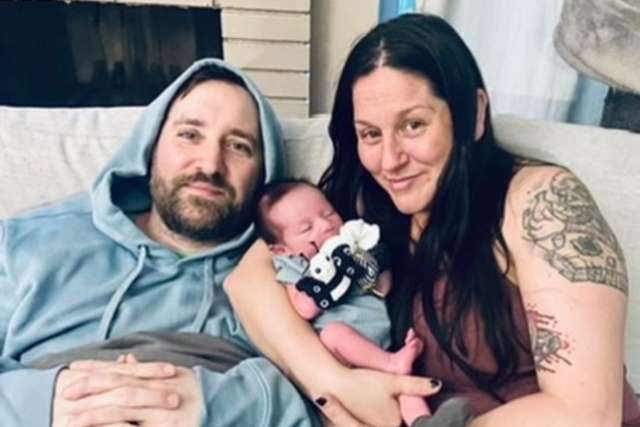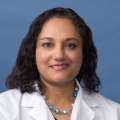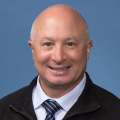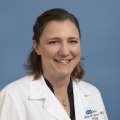KC Brandenstein sees nothing but perfection in her 5-month-old daughter, James, from her adorable smiles to her happy disposition.
But last spring, Brandenstein feared the worst when a routine 20-week anatomy scan at UCLA Health found only one kidney in the developing baby instead of two.
“I started panicking,” Brandenstein recalled. “I think I immediately started crying. I’d already had two miscarriages, and I didn’t know what one kidney meant.”
Brandenstein’s doctor, Christina Han, MD, director of maternal-fetal medicine at UCLA Health, immediately sought answers for Brandenstein and her husband, Jason Benoit.
“Whenever we identify a problem, our main question is: Did this just happen on its own or did it happen because there was a problem with the blueprint, in essence the genetics, of the baby?” Dr. Han said.
Dr. Han performed an amniocentesis in order to retrieve amniotic fluid containing DNA. Genetic testing found that the baby had a rare chromosomal disorder called mosaic Turner syndrome. She called Brandenstein to share the results and explain the condition.
“My stomach dropped like a bad roller coaster,” Brandenstein said. “I felt like the world just stopped all around me. I just remember hearing my heart pounding in my ears and everything else was quiet.”
Mosaic Turner syndrome is a form of Turner syndrome, a condition that affects development only in females. Symptoms are highly variable but can result in short stature, a wide neck, kidney abnormalities, hearing loss or heart defects. Additionally, girls may not enter puberty without the aid of hormone therapy and may later experience infertility.
The condition is not inherited but occurs randomly during cell division early in pregnancy or because of an error in the sperm or egg. Females carry two X chromosomes but in the case of Turner syndrome, one copy of the X chromosome is missing or structurally altered.
In Turner syndrome, the missing or incomplete X chromosome is found in all of a person’s cells. Mosaic Turner syndrome differs because the chromosomal change is present in only some cells, which can mean any health problems or signs of the condition are less severe.
“Essentially, some of their body has cells that are abnormal and some of their cells are normal,” Dr. Han said.
Roughly 1 in 2,000 to 2,500 baby girls are born with Turner syndrome, and more than 70,000 females in the U.S. are living with the syndrome, according to the National Organization for Rare Disorders. Among them, an estimated 30% have the mosaic form.
By the time of the diagnosis, Brandenstein, 39, and Benoit, who both work in the film industry, had already created a movie-themed nursery for their first child. Brandenstein works as a director of development and production, while Benoit is a writer and producer. The movie “Beetlejuice” inspired Brandenstein’s career, so they filled the nursery with images inspired by director Tim Burton and his art.
As their anticipation turned to worry, the couple did not want to terminate the pregnancy. But they also wanted to learn as much as they could about any potential disability or hardship their child might face.
Dr. Han, an associate clinical professor at the David Geffen School of Medicine at UCLA, mobilized a multidisciplinary team to further evaluate the baby’s heart and kidney.
“These are always very difficult conversations for us to have, but it’s what we do in maternal-fetal medicine, both happy news and detrimental news,” Dr. Han said. “KC was very taken aback by this very unexpected finding. We were able to utilize the best resources we have at UCLA and give her enough information for them to be comfortable in their decision to continue the pregnancy.”
One last try
Before becoming pregnant with James, Brandenstein had experienced two miscarriages. In response, the couple sought fertility treatment.
They decided to try intrauterine insemination, or IUI, which places sperm directly into the uterus to increase the chance of egg fertilization. The first attempt failed so they decided to try once more before moving on to adoption.
This time, in December 2022, the procedure worked. At first, they tempered their excitement out of fear of another pregnancy loss.
“I was completely paranoid,” Brandenstein said. “My husband wasn’t getting excited because he was so scared I was going to lose it again.”
As the weeks went by, Brandenstein heard the baby’s heartbeat and all prenatal testing came back normal, allowing her to relax.
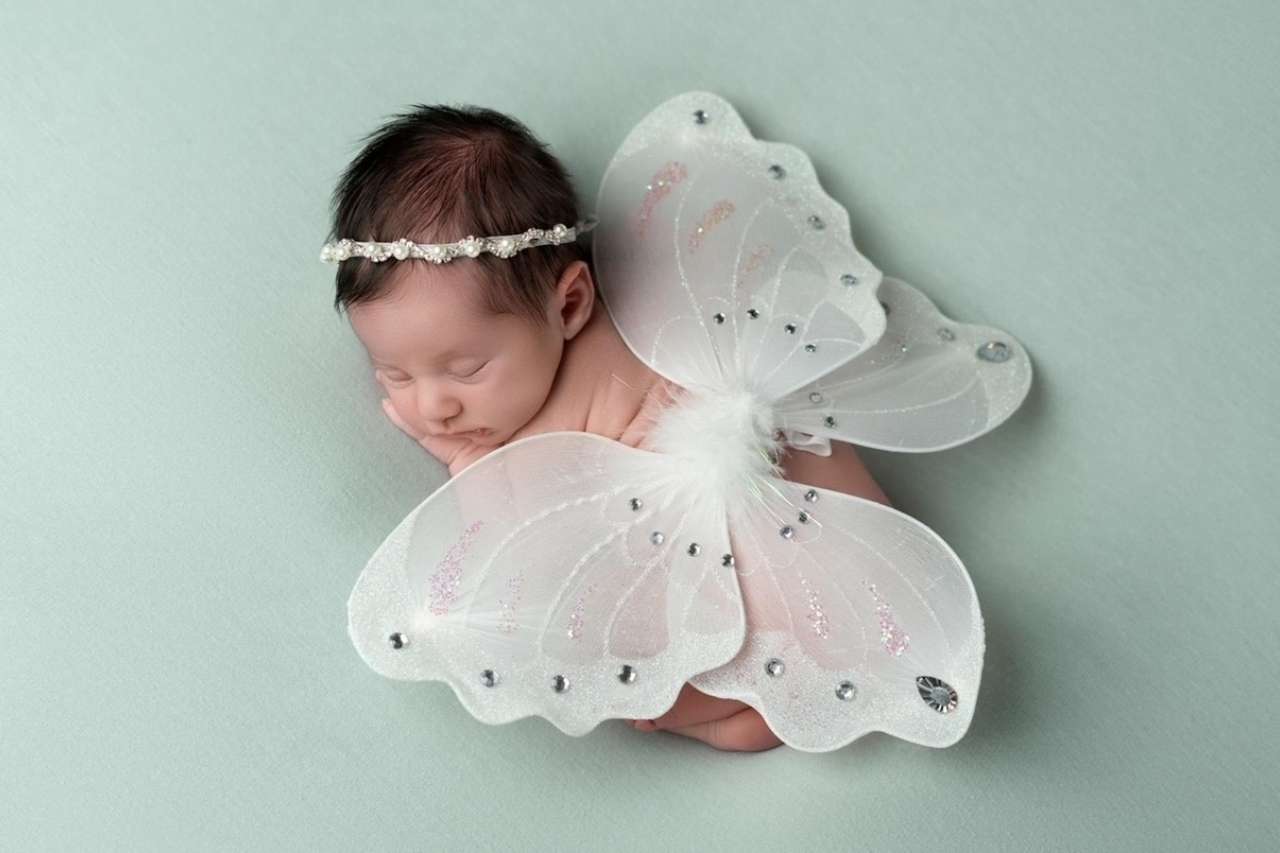
Before the anatomy ultrasound at the halfway mark of Brandenstein’s pregnancy, the couple had recently found out they were having a girl and were ecstatic. James is the name of Brandenstein’s father and she’d always loved the name for a daughter.
When the scan showed only one kidney, Brandenstein recalled, Dr. Han said that lacking a second kidney wouldn’t interfere with living a normal life, but that it was important to try to determine the cause.
When Dr. Han shared the diagnosis, she arranged for the couple to meet with reproductive geneticist Sulagna Saitta, MD, PhD so they could fully understand mosaic Turner syndrome. Dr. Han also sent them to other UCLA Health specialists to determine more about the development of the baby’s organs.
Brandenstein saw pediatric cardiologist Gary Satou, MD for a fetal echocardiogram and pediatric urologist Renea Sturm, MD evaluated images of the one kidney. Neither found any concerns and Dr. Han was there to answer all her questions.
“I think the UCLA team just gave me such great peace of mind,” Brandenstein said. “Everyone got back to me immediately. Everyone just set me up. If the doctors knew I was seeing a certain specialty, they gave me a list of questions to ask.”
Genetic testing revealed that abnormal cells indicative of mosaic Turner syndrome were present in only 30% of the baby’s body, which Dr. Han described as very low. In fact, Dr. Han said some women with mosaic Turner syndrome never get diagnosed because their case’s manifestations are so mild.
“That’s part of the reason we hear about it less,” Dr. Han said. “Some people are walking around with mosaic Turner syndrome and will never find out unless they start experiencing fertility issues.”
It turned out Brandenstein and her husband had another expert they also could turn to about living with the condition.
“Coincidentally, one of our best friends has it as well,” Brandenstein said. “She is like the perfect case of mosaic that you can have. She had her own children, she’s very smart. She’s adorably small and she lives a perfect life.”
Their friend Jami answered all of their questions. And in the end, the information they received, along with James’ incessant kicking, gave Brandenstein the confidence to continue the pregnancy.
“I decided I’m going to keep her, and we’re going to roll the dice,” Brandenstein said. “The second I made the decision, I never worried again.”
Birth and motherhood
In September 2023, James Mackenzie entered the world with punk rock music playing in the delivery room at Ronald Reagan UCLA Medical Center. James appeared with a head full of jet black hair, weighing 6 pounds, 1 ounce.
“Immediately my heart just stopped and I was so beyond happy,” Brandenstein said. “She looked like this little perfect thing. They set her on me and I was in love.”
James is hitting every milestone and thriving.
After her birth, a doctor in the hospital was able to find a second kidney. During development in utero, kidneys form in the pelvis but then typically move up into the proper position just below the rib cage. James’s second kidney was still in her pelvis and seems to be functioning fine. Kidney irregularities are common in Turner syndrome and Dr. Sturm will continue to follow her.
She also saw Dr. Satou who will check her annually, but so far has found no heart defects. Her hearing is also being tested and monitored. Though the UCLA Health team will continue monitoring James, they won’t be able to assess any potential growth or hormonal concerns until she’s older.
Brandenstein said her family will never go anywhere but UCLA Health because of the superb care they received during and after her pregnancy.
“This is our standard of care,” Dr. Han said. “In my eyes it didn’t seem exemplary. This is just how we take care of every patient who comes in and how we escalate their care when a complication arises. My favorite part of my job is hearing from the patients afterward and knowing we were able to hold their hand through the process. I could sense how happy and relieved they were when they finally met James.”
Looking toward the future
Along with a college fund, Brandenstein and Benoit have set up a fertility fund in case James one day needs reproductive assistance.
“For now, the baby seems to be doing wonderfully,” Dr. Han said. “That’s reassuring so far. The fact that KC and her partner are comfortable and happy with the outcome is what’s important to us.”
Brandenstein said her daughter looks and behaves like any other baby.
“I love all the firsts,” she said. “I love all our snuggle times. My favorite thing to do is feeding her. She will just lock eyes. She’ll stare at you and smile. Everyone says she’s just the happiest baby and I’m just loving it.”
Going through so much stress and fear about her daughter’s well-being has in some ways helped her appreciate motherhood even more, she said.
In one of James’ newborn photos, white butterfly wings are draped across her back. The butterfly has been adopted as a symbol of Turner syndrome because the X chromosome evokes the image of a butterfly’s spread wings.
“End of the day, she’s perfect,” Brandenstein said. “Anything I went through, I would do 1,000 times over to get her as she is now.”
